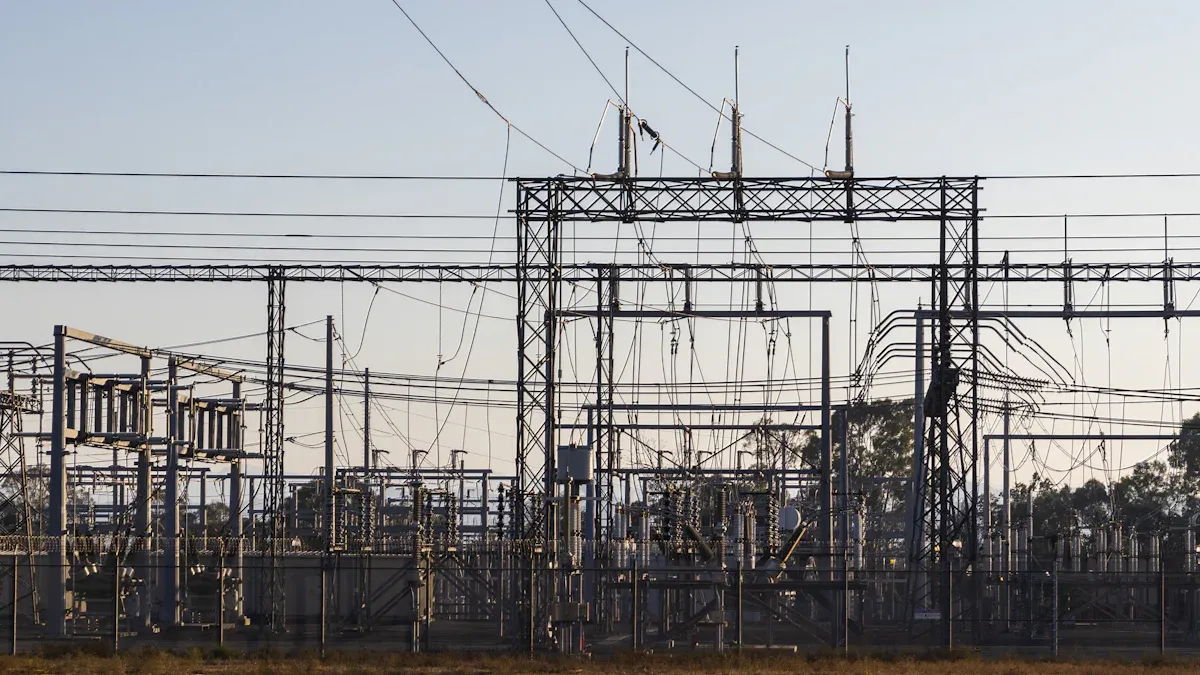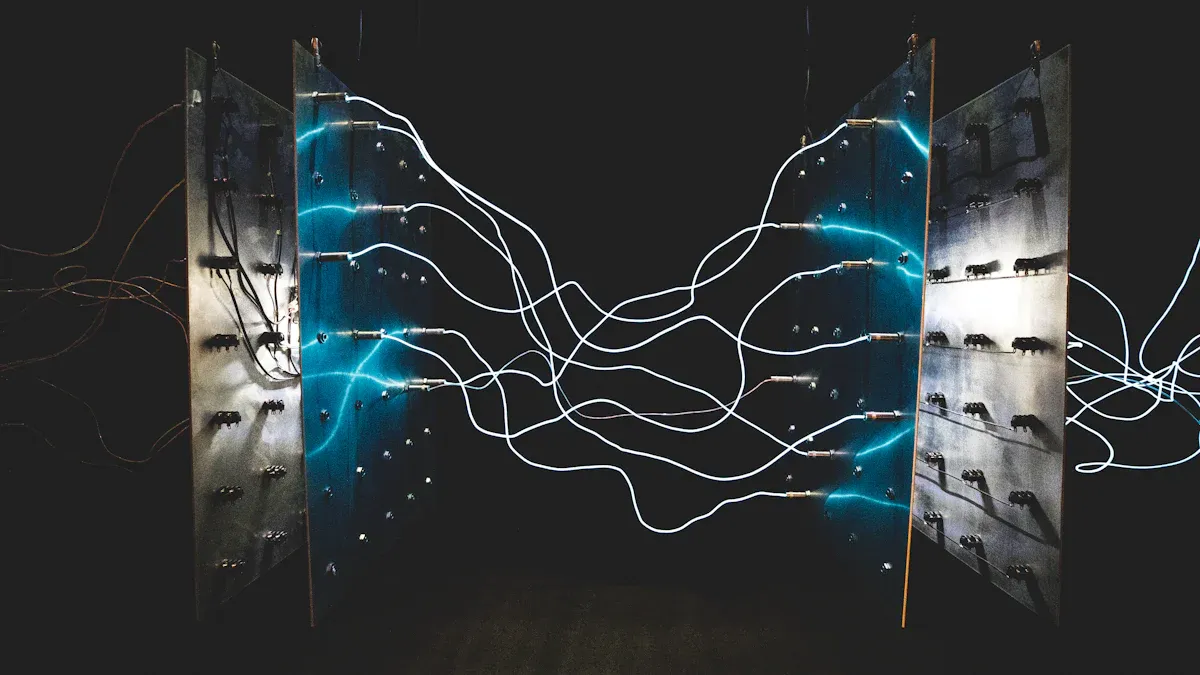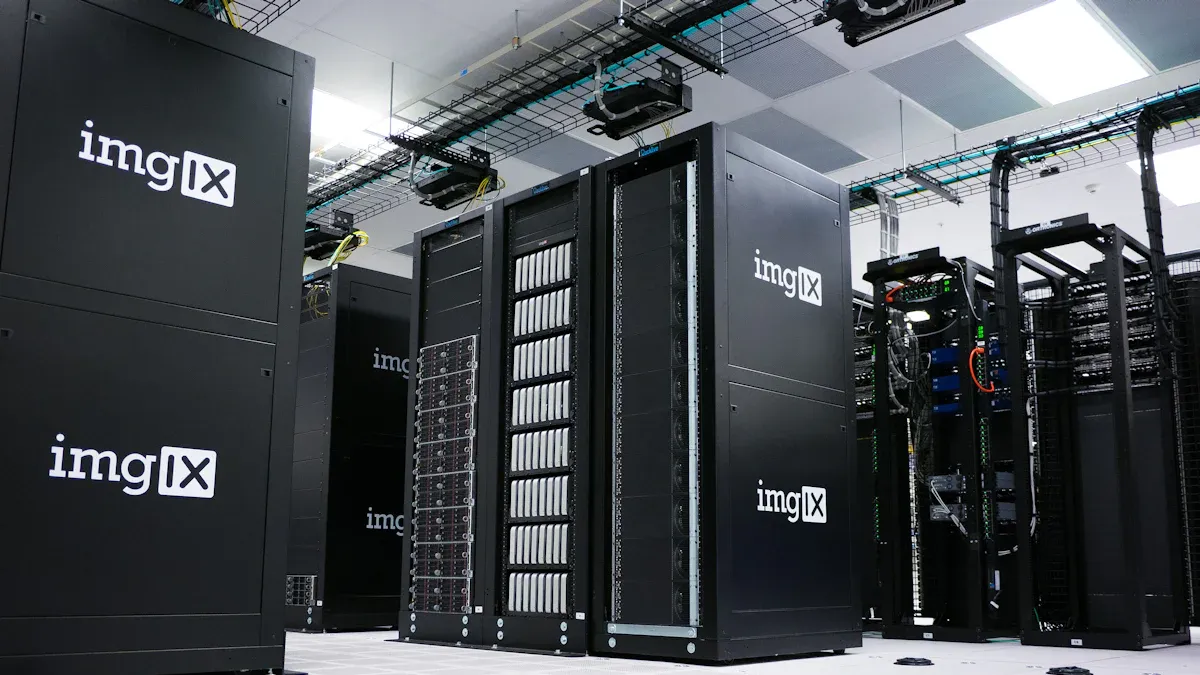
Efficient power distribution plays a pivotal role in the operations of cloud providers. It directly influences their ability to maintain reliability and control operational costs. Addressing power distribution challenges ensures uninterrupted service delivery. Smart PDUs provide innovative solutions, enabling cloud providers to optimize energy usage and enhance overall system performance.
Key Takeaways
- Cloud providers can save money by using better power systems. These systems cut energy waste and support eco-friendly goals.
- Smart PDUs track energy use instantly. This helps cloud providers find problems and use power more wisely.
- Using smart PDUs makes power more reliable during outages. They allow remote control and alerts, helping fix issues fast and reduce downtime.
Power Inefficiencies in Cloud Providers

Operational costs driven by inefficient power usage
Cloud providers face significant challenges in managing operational costs due to inefficient power usage. Power inefficiencies often result from outdated equipment, uneven power distribution, and the inability to track energy consumption accurately. These inefficiencies not only inflate energy bills but also increase the carbon footprint of data centers. For cloud providers, this can lead to higher operational expenses and reduced competitiveness in the market.
Tip: Investing in modern power distribution solutions can help cloud providers reduce waste and improve energy efficiency.
By addressing inefficiencies, cloud providers can optimize their energy usage and allocate resources more effectively. This approach not only reduces costs but also aligns with sustainability goals, which are increasingly important in today’s business environment.
Real-time monitoring and optimization with smart PDUs
Smart PDUs offer a transformative solution to power inefficiencies. These devices enable real-time monitoring of energy consumption, providing granular insights into power usage across different systems. With this data, cloud providers can identify inefficiencies and take corrective actions promptly.
For instance:
- A mid-sized data center implemented monitored PDU solutions and achieved a $50,000 reduction in annual energy expenses.
- The same data center experienced a 30% decrease in downtime incidents.
These results highlight the potential of smart PDUs to optimize power distribution effectively. Additionally, smart PDUs allow remote management, enabling operators to adjust power settings without being physically present. This capability enhances operational efficiency and minimizes the risk of human error.
By leveraging smart PDUs, cloud providers can achieve a balance between cost savings and operational reliability. The ability to monitor and optimize power usage in real time ensures that resources are utilized efficiently, paving the way for sustainable growth.
Limited Visibility into Power Consumption
Risks of insufficient data for cloud providers
Limited visibility into power consumption poses significant risks for cloud providers. Without accurate data, they struggle to monitor workload performance, identify inefficiencies, and manage operational costs effectively. This lack of insight can lead to poor energy management decisions, which may increase expenses and reduce overall efficiency.
A recent study highlights the challenges:
| Statistic | Implication |
|---|---|
| 80% of organizations report visibility gaps in cloud operations | These gaps hinder monitoring of workload performance, security threats, and cloud costs. |
| 70% of companies are unsure of their cloud budget spending | Indicates a significant lack of cost attribution and transparency in cloud financial management. |
| 59% use 3+ tools for cloud management | Complexity in managing multiple tools complicates accurate analysis and optimization of resources. |
Additionally, insufficient ongoing monitoring of power quality often results in missed opportunities to optimize energy usage. This variability in energy consumption estimates can mislead energy management strategies, potentially stressing electricity grids and impacting other users.
Granular insights and reporting enabled by smart PDUs
Smart PDUs address these challenges by providing granular insights and accurate reporting of power usage. These devices offer advanced features that empower cloud providers to monitor and manage energy consumption with precision.
| Feature | Description |
|---|---|
| Real-Time Monitoring | Provides detailed tracking of power parameters for better resource management. |
| Remote Control | Enables remote rebooting and power cycling, reducing the need for on-site intervention. |
| Environmental Monitoring | Tracks conditions like temperature and humidity, alerting operators to potential risks. |
| Power Usage Analytics | Delivers dashboards with consumption patterns, helping to identify inefficiencies. |
By leveraging these capabilities, cloud providers can gain a comprehensive understanding of their energy usage. This allows them to optimize power distribution, reduce operational costs, and enhance system reliability. Intelligent PDUs also enable proactive management, ensuring that potential issues are addressed before they escalate.
Note: Smart PDUs not only improve visibility but also simplify energy management, making them an essential tool for modern cloud environments.
Downtime Risks Due to Power Failures

Impact of outages on cloud providers’ operations
Power failures pose a significant threat to the operations of cloud providers. These disruptions can halt critical services, leading to financial losses and reputational damage. Power-related outages account for 43% of all data center outages, highlighting their prevalence. Data centers, which consume vast amounts of electricity, often rely on national power grids. The growing demand for electricity makes it increasingly difficult to maintain a stable supply, resulting in sudden outages that disrupt cloud services.
The consequences of outages are evident in recent incidents:
| Incident | Duration | Cause | Impact on Users and Businesses |
|---|---|---|---|
| AWS Outage (December 2021) | Nearly 11 hours | Automated system error | Disrupted various services globally, causing significant business impact. |
| Google Cloud Outage (Nov 2021) | 2 hours | Network configuration glitch | Impacted services like Home Depot and Spotify, leading to 404 errors for users. |
| Microsoft Azure Outage (Oct 2021) | 6 hours | Software issue during VM migration | Users faced difficulties with VM deployment and service management operations. |
These examples demonstrate how outages can disrupt businesses and users, emphasizing the need for robust power management solutions.
Enhanced reliability through remote management and alerts
Smart PDUs significantly improve reliability during power failures. They provide real-time monitoring and remote control, enabling operators to respond quickly to power abnormalities. Alerts for issues like overload conditions or voltage fluctuations are sent via SMS or email, ensuring timely communication. This proactive approach helps prevent downtime by addressing problems before they escalate.
Additionally, smart PDUs can integrate with centralized management software, streamlining operations during emergencies. Operators can remotely reboot systems or adjust power settings without being on-site, reducing response times. These features enhance the resilience of cloud providers, ensuring uninterrupted service delivery even during power disruptions.
By adopting smart PDUs, cloud providers can mitigate the risks associated with power failures. The ability to monitor, manage, and respond remotely ensures operational continuity, safeguarding both business operations and customer trust.
Cloud providers face three critical challenges in power distribution: inefficiencies, limited visibility, and downtime risks. Smart PDUs effectively address these issues with advanced features like real-time monitoring, granular reporting, and remote management.
- Key Benefits of Smart PDUs:
- Improved energy efficiency through precise monitoring and control.
- Enhanced operational efficiency by minimizing downtime and optimizing resources.
- Significant cost savings by reducing energy waste.
| Challenge | Description |
|---|---|
| Lack of visibility into granular power quality | Increases downtime risk due to undetected power quality issues. |
| Inability to optimize efficiency | Leads to stranded capacity and wasted resources. |
| Lack of integration with management tools | Limits the effectiveness of power quality monitoring and management. |
Adopting smart PDUs ensures efficient and reliable power distribution, enabling cloud providers to optimize energy usage, reduce costs, and maintain seamless operations.
FAQ
What is a Smart PDU, and how does it differ from a traditional PDU?
A smart PDU provides advanced features like real-time monitoring, remote management, and environmental tracking. Traditional PDUs lack these capabilities, offering only basic power distribution.
Tip: Smart PDUs are ideal for cloud providers seeking efficiency and reliability.
Can smart PDUs help reduce operational costs for cloud providers?
Yes, smart PDUs optimize energy usage through real-time monitoring and analytics. This reduces waste, lowers energy bills, and improves overall cost efficiency.
Are smart PDUs compatible with existing data center infrastructure?
Most smart PDUs integrate seamlessly with existing systems. They support various configurations and management tools, ensuring compatibility without requiring significant infrastructure changes.
Note: Consult your PDU supplier for specific compatibility details.
Post time: Mar-28-2025

